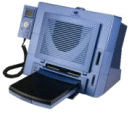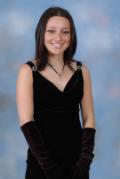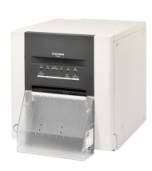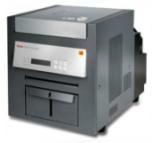|
| Home> Professional Dye Sublimation> Kodak Printer Range> Mitsubishi Printer Range> Kodak 6850 vs Mitsubishi CP9550DW Photo Printers | ||||||||||||||||||||||||||||||||||||||||||||||||||||||||||||||||||
|
We compare the Mitsubishi CP9550DW and the Kodak 6850 Photo Printer and show the advantages and disadvantages of both:
In terms of size, the Mitsubishi 9550DW is 11.8" x 12.8" x 14.3" and the Kodak 6850 is 11.4"W x 19.6"D x 13.6"H, which makes the Mitsubishi approx. 7 inches deeper than the Kodak. As you can see, the 9550DW is the smaller and lighter of the two units, but you would definitely need two people to lift the 6850 safely. Connectivity Print Sizes There are also issues about using 7 x 5 media in the Kodak 6850; an upgrade kit is available to allow borderless 7 x 5 prints although Kodak " recommend that you print either 5 x 7 borderless prints or 4 x 6 / 6 x 8 prints on
the KODAK Photo Printer 6850 printer and not switch back and forth between 5 x 7
or 4 x 6 / 6 x 8 formats" - Kodak 6850 7x5 Conversion Kit Print Speed It is worth noting however, that both printers occasionally need to stop to cool the printhead, and this may affect the actual throughput of the printers. If speed is important then we recommend testing both printers before purchase with real images. Print Media
As the chart above shows the 6850 does print more images per roll, possibly due to the fact that the printer is slightly larger and can accomodate a larger media roll. It cannot however print 9x6 prints, which does seem a little unusual for a professional printer. Print Media Costs
Conclusion:
What we think:
If you need to print from an Apple Mac or print speed is not the only factor, then the CP9550 does seem to tick all the boxes. With a lower cost per print and a wide range of image sizes you can't go far wrong with the CP9550DW
|
|||||||||||||||||||||||||||||||||||||||||||||||||||||||||||||||||

 Save over £70 on
Save over £70 on





